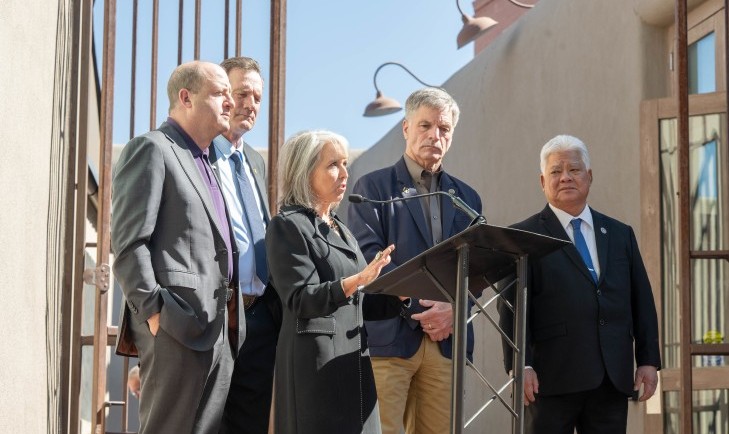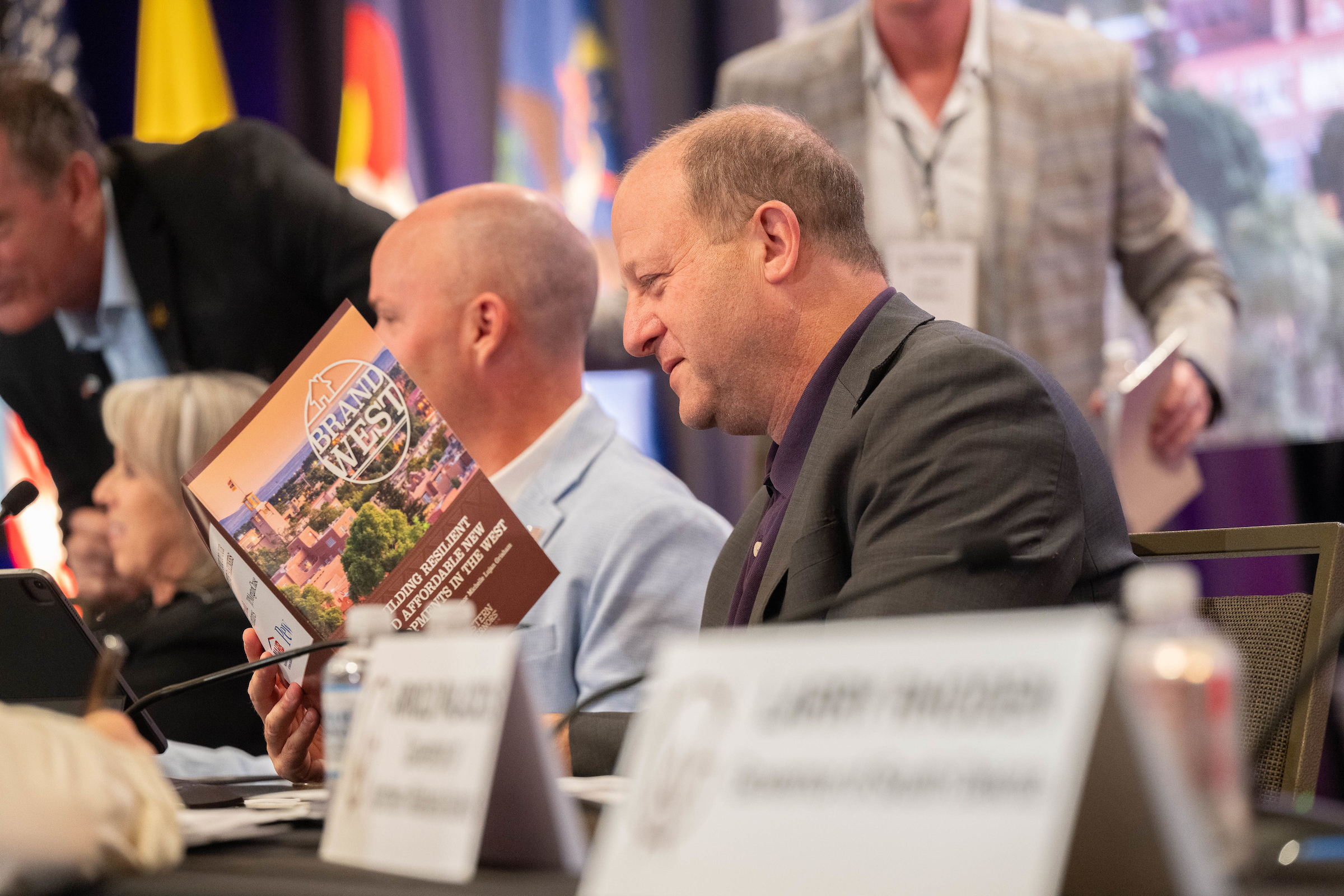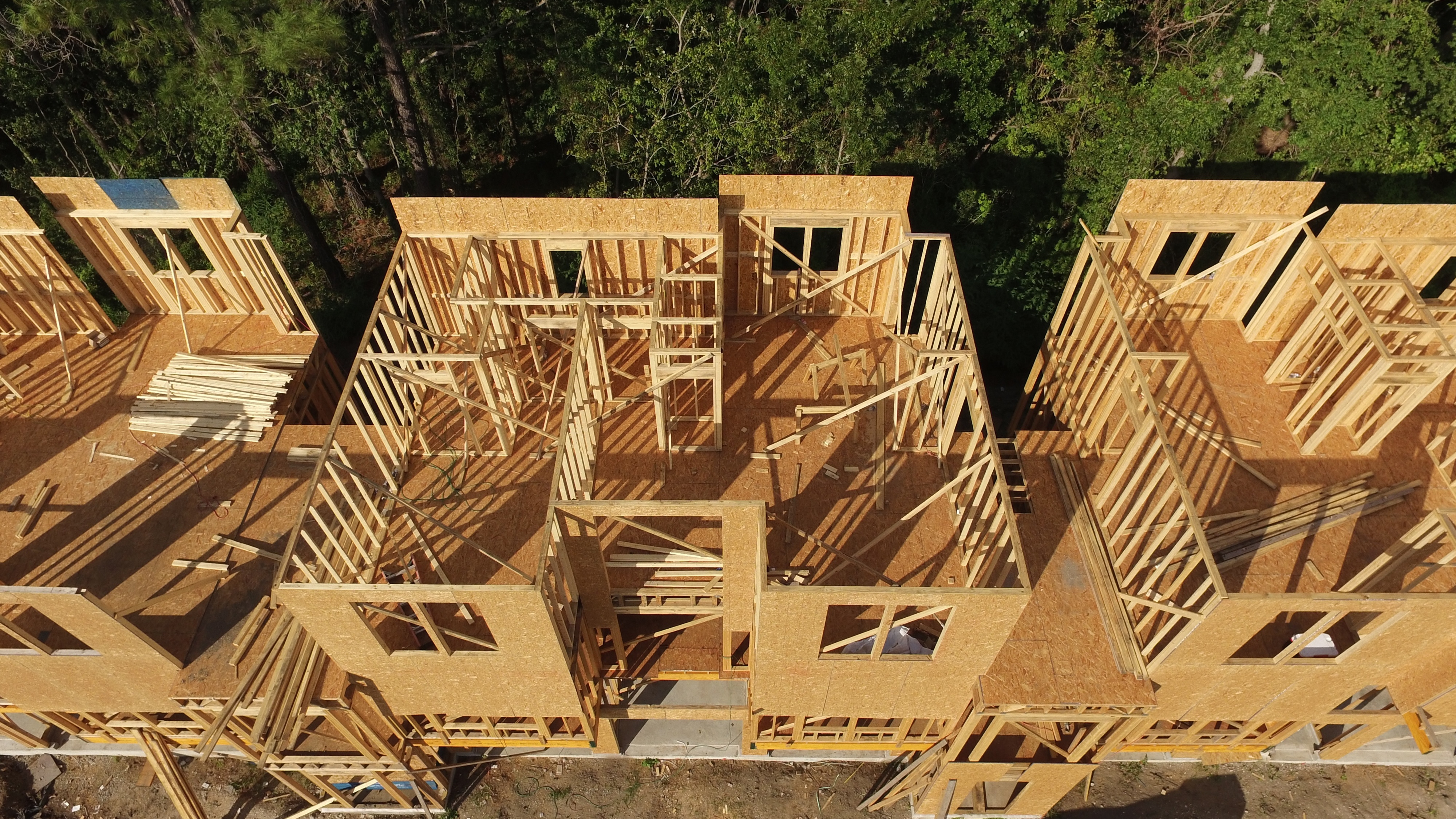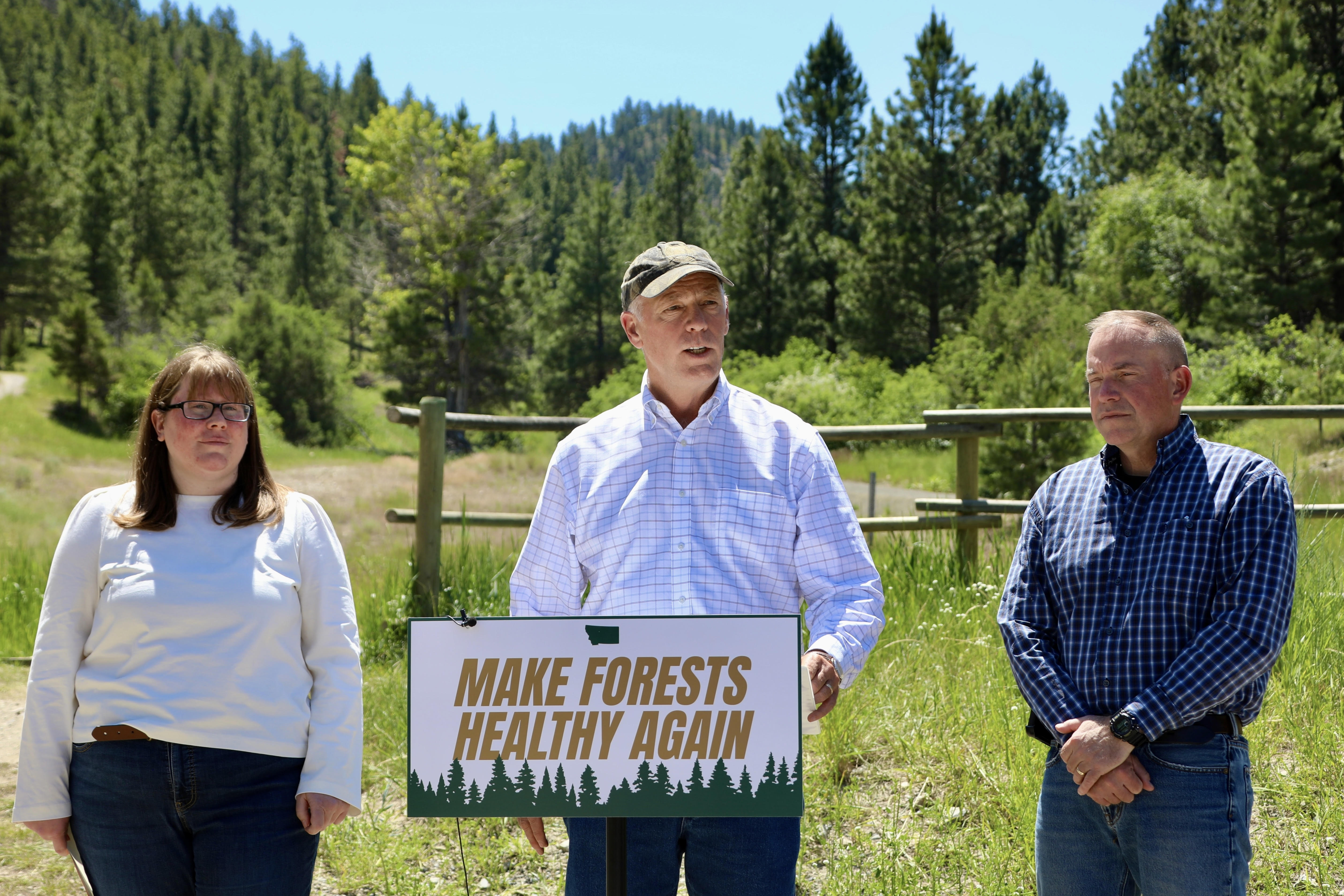07/02/25
Best of the West: Boosting western housing supply; HI biosecurity; MT-USFS Shared Stewardship; Tribal health care gap; CO geothermal grants

The Western Governors' Association keeps you updated on the latest news in the West. Here are the top stories for the week starting June 30, 2025. (Photos courtesy of Adobe Stock Images and the Office of Montana Governor Greg Gianforte).
During last week’s Annual Meeting, New Mexico Governor Michelle Lujan Grisham officially unveiled her BRAND West initiative report as Chair of WGA.
The report, which examined critical areas where federal, local, state, and territorial governments can provide meaningful solutions to the housing crisis, comes at a time when leaders at all levels of government are searching for ways to build more homes and bring down the cost of housing. 
The Governor’s Chair initiative positions important momentum behind growing efforts to streamline housing development and make housing more attainable across the West. Many of the report’s recommendations and best practices are already proving their efficacy in western states, and BRAND West aims to position these western innovations and recommendations at the forefront of the national housing conversation.
Let’s take a look at some recent developments in housing across the West, and where they intersect with key aspects of the Governors’ initiative.
In Oregon, the City of Portland recently moved forward with a plan to waive some construction fees to boost new apartment development in the city. The plan would waive system development charges that are typically collected to offset the costs that new developments impose on city infrastructure. Developers say that these fees are prohibitive to new housing developments in Portland.
On Tuesday, Oregon Governor Tina Kotek announced a new state office tasked with fast-tracking housing development across the state. The Housing Accountability and Production Office will bolster Oregon’s housing production by creating a more predictable regulatory environment for builders and supporting local governments in meeting their housing goals. It will also act as a liaison between state agencies and local developers to most effectively use state resources and conduct research to inform all levels of government on how to best achieve Oregon’s housing production needs.
The BRAND West report makes specific recommendations to streamline prohibitive permitting, approval, and land use regulations that slow down the production of sorely needed housing. Watch the second BRAND West initiative workshop, hosted earlier this year by Governor Kotek in Bend, Oregon, here.
BRAND West initiative workshop, hosted earlier this year by Governor Kotek in Bend, Oregon, here.
In Salt Lake City, Utah, city officials are moving forward with plans for a revitalized multi-use neighborhood built around the site of the city’s former minor league baseball team. The city envisions a concert and sports venue, a new fire station, a library branch, and multi-family housing constructed around the former home of the Salt Lake Bees. Check out the Salt Lake City BRAND West workshop, which Governor Spencer Cox hosted in December. Among the numerous housing topics covered in Salt Lake was an interesting discussion about thoughtfully planned mixed-use development, similar to the plans for the ballpark neighborhood.
In New Mexico, city leaders in Albuquerque are ramping up an effort to turn abandoned homes and hotels into housing for the city, where 30,000 new units are required to keep up with demand. The city created a program last year offering $4 million to developers to rehabilitate old buildings as housing. The BRAND West workshop in Utah featured a discussion about innovative ways to transform buildings through adaptive reuse. Watch it here.
In Bozeman, Montana, renters and prospective homebuyers are beginning to see the fruits of years of rapid housing construction, as housing supply is beginning to outpace demand in one of Montana’s most expensive cities.
Since 2021, more than 3,000 rentals have been built in Bozeman, with more than 4,000 units still in the planning pipeline. This rapid construction has eased the pressure on the city’s rental market, which has struggled to keep up with a crush of demand since 2019.
This year, Bozeman renters are negotiating rent reductions with their landlords, and the median price of a single-family home has fallen by 6.7% since last year. Falling housing costs would have been unfathomable even months ago for a city that has seen its average rent nearly double in just six years.
For more on detailed strategies and recommendations for increasing housing supply and addressing the housing crisis, read the new BRAND West initiative report.
Hawaii biosecurity: Hawaii Governor and new WGA Vice Chair Josh Green signed a series of bills last week to protect Hawaii’s agricultural industry and strengthen the state’s resilience against biosecurity threats such as invasive species, pests, and diseases.
“The health and resiliency of our agricultural lands and producers are not just vital — they are the very foundation of Hawai‘i’s well-being and future,” said Governor Green. “It is our kuleana to protect the ‘āina that nourishes our people and to uplift those who represent Hawai‘i through their unwavering dedication and hard work. The bills signed today mark our state’s continual support of those responsibilities.”
Read more on each bill here.
Montana-USFS Shared Stewardship: on Monday, Montana Governor Greg Gianforte and U.S. Forest Service Chief Tom Schultz formalized a Shared Stewardship Agreement to establish a new framework to dramatically increase the pace and scale of forest restoration, wildfire risk reduction, and sustainable timber production across Montana’s national forests and adjacent lands.
dramatically increase the pace and scale of forest restoration, wildfire risk reduction, and sustainable timber production across Montana’s national forests and adjacent lands.
“This agreement will empower our state to take the lead in active forest management, reduce wildfire risk, support local jobs, and ensure our forests remain healthy for generations to come,” said Governor Greg Gianforte.
Read more about the agreement here.
Bridging the health care gap: Tribes in rural areas of Nevada and other western states are often cut off from health care services that are centered in far-away cities and towns. To combat this shortage of reliable, nearby health services, some are turning to mobile health clinics that can serve multiple communities.
One such mobile clinic covers 200 miles to serve tribal members on the Lovelock Paiute and Yomba Shoshone reservations in Nevada, where it cares for about 2,000 patients that otherwise would not have reliable access to care.
Doctors with the Fallon Tribal Health Center say that bringing the mobile clinic into communities not only helps tribal members treat immediate health issues, but also provides important preventative care to residents.
Geothermal funding: the Colorado Energy Office recently announced the last round of funding from its nation-leading geothermal grant program, which has provided $10.3 million for 56 initiatives across the state to advance geothermal technology.
The latest funding will go toward geothermal network installations, thermal energy network studies, and other projects.
“By better using the heat beneath our feet to help us, we are leading the nation in innovative clean energy technologies that save Coloradans money, and protect our air quality. Investing in Geothermal heating technology increases energy reliability and serves as a low-cost energy source,” said Governor Jared Polis.
Check out Governor Polis’ 2023 WGA Chair initiative on geothermal, The Heat Beneath our Feet, here.